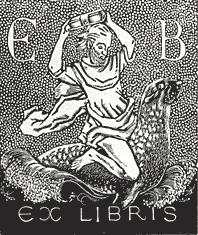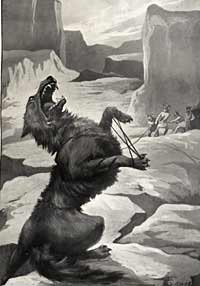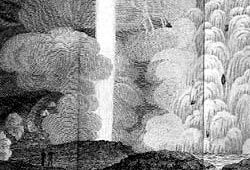April 9, 2024, by Chloe
Discovering Iceland with the Benedikz Collection
The University of Nottingham may seem like an unlikely home for a treasure trove of Icelandic literature, but, nonetheless, in 1998 we welcomed the Benedikz collection: an assemblage of Old Icelandic sagas, poetry and travel books which greatly enhanced our pre-existing holdings of Norse, Icelandic and Viking literature. So, how did this remarkable acquisition come to pass?
Eiríkur Benedikz was a prominent scholar, diplomat and – most importantly for us – book lover, collecting Icelandic literature for over 60 years. Following his death in 1988, his family wanted to honour his often-expressed wish to find the collection a permanent home. They eventually decided that it ought to be given to the student he considered to be the best he ever taught – Christine Fell, who by that point was a professor here at Nottingham. Sadly, she passed away shortly before the books were actually transferred here.
Among the collection’s many gems, the early editions of Old Icelandic sagas stand out as a particular highlight, as they are of great significance both to the history of printing, and to the history of the reception of Old Icelandic literature by the wider world.
For example, the collection includes the first-ever printed edition of Egils saga Skallagrímssonar, published in 1782 at Hrappsey in the south of Iceland. This was slightly unusual, as any of the other early editions of the sagas in the collection were printed in Copenhagen, where many Icelandic manuscripts had found their way during the period of Danish rule.
The Arnamagnæan Commission, which had responsibility for these manuscripts, published sagas with editorial matter and sometimes a facing-page translation in Latin, to make the texts available to as wide and international a public as possible. Such editions in the Benedikz Collection include the first-ever printed edition of Njáls saga from 1772, the first complete edition of Laxdæla saga, from 1826, and a collection of texts relevant to the history of Christianity in Iceland including Kristni saga, from 1773.
The collection is also rich in Icelandic poems – specifically those in a genre known as rímur, which has existed from the medieval period up until the modern day. The poems were generally based on well-known stories, giving the poet a chance to display his talents while still being understood by as wide an audience as possible. Thus, early rímur were based on medieval myths and sagas, while later rímur poets took their inspiration from the popular literature of their day, or anything that took their fancy (though many of them did still rework traditional stories).
The works of British travellers to Iceland are also well represented in the Benedikz Collection, including many books illustrated with dramatic pictures of mountains and geysers, and describing the natural history of the country. This is the result of a boom in interest in travel to Iceland in the early nineteenth century, after a report on the country which had been ordered by the Danish king was translated into English and published in London in 1805 under the unwieldy title: ‘Travels in Iceland performed by order of his Danish Majesty containing observations on the manner and customs of the inhabitants, a description of the lakes, rivers, glaciers, hot-springs, and volcanoes; of the various kinds of earths, stones, fossils, and petrifactions; as well as of the animals, insects, fishes…’
You can read that book, or any of the others mentioned in this blog, in our Reading Room – to find out more, or to book an appointment today, please contact us at mss-library@nottingham.ac.uk.
No comments yet, fill out a comment to be the first





Leave a Reply